Harpocrates
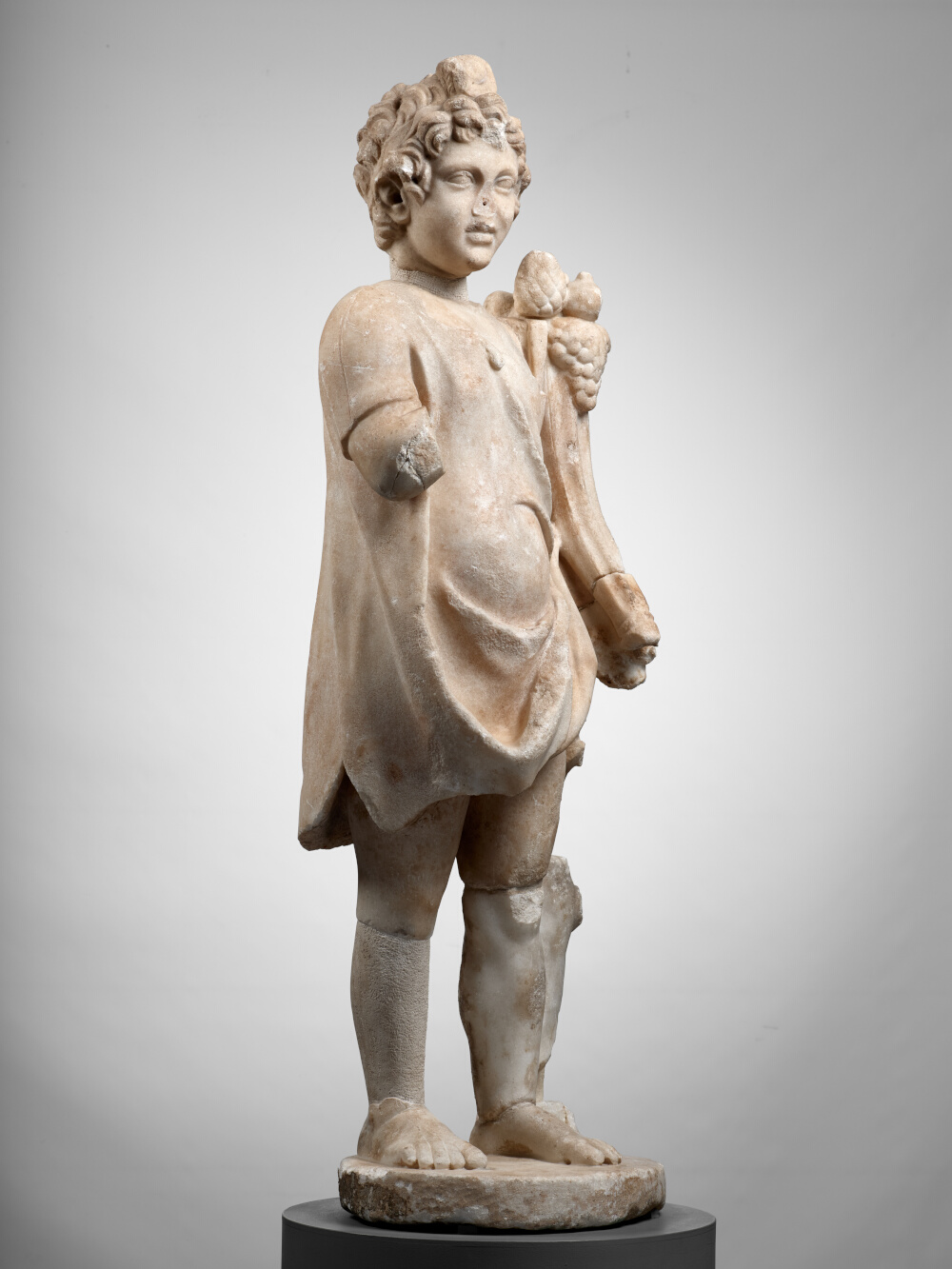
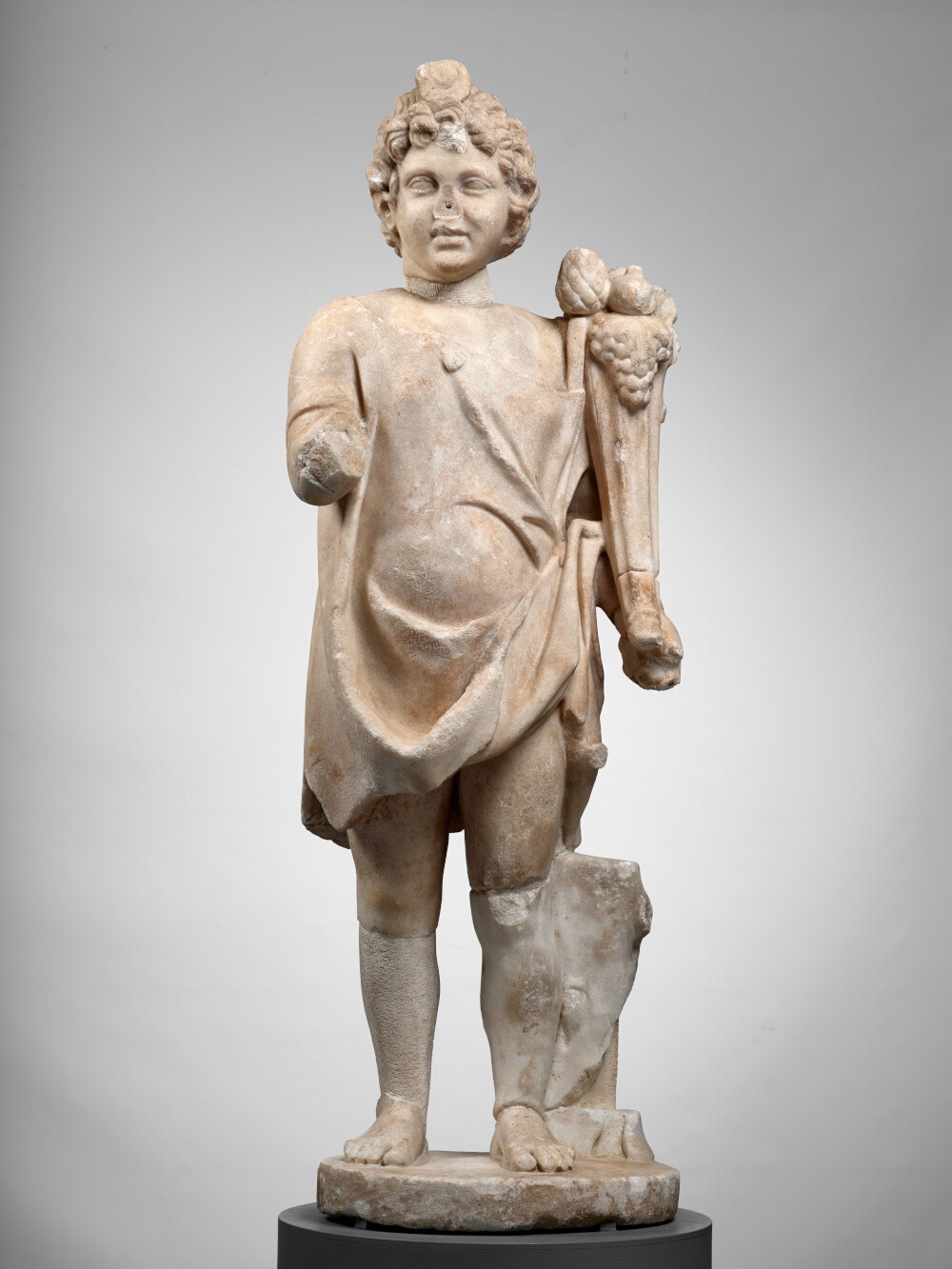
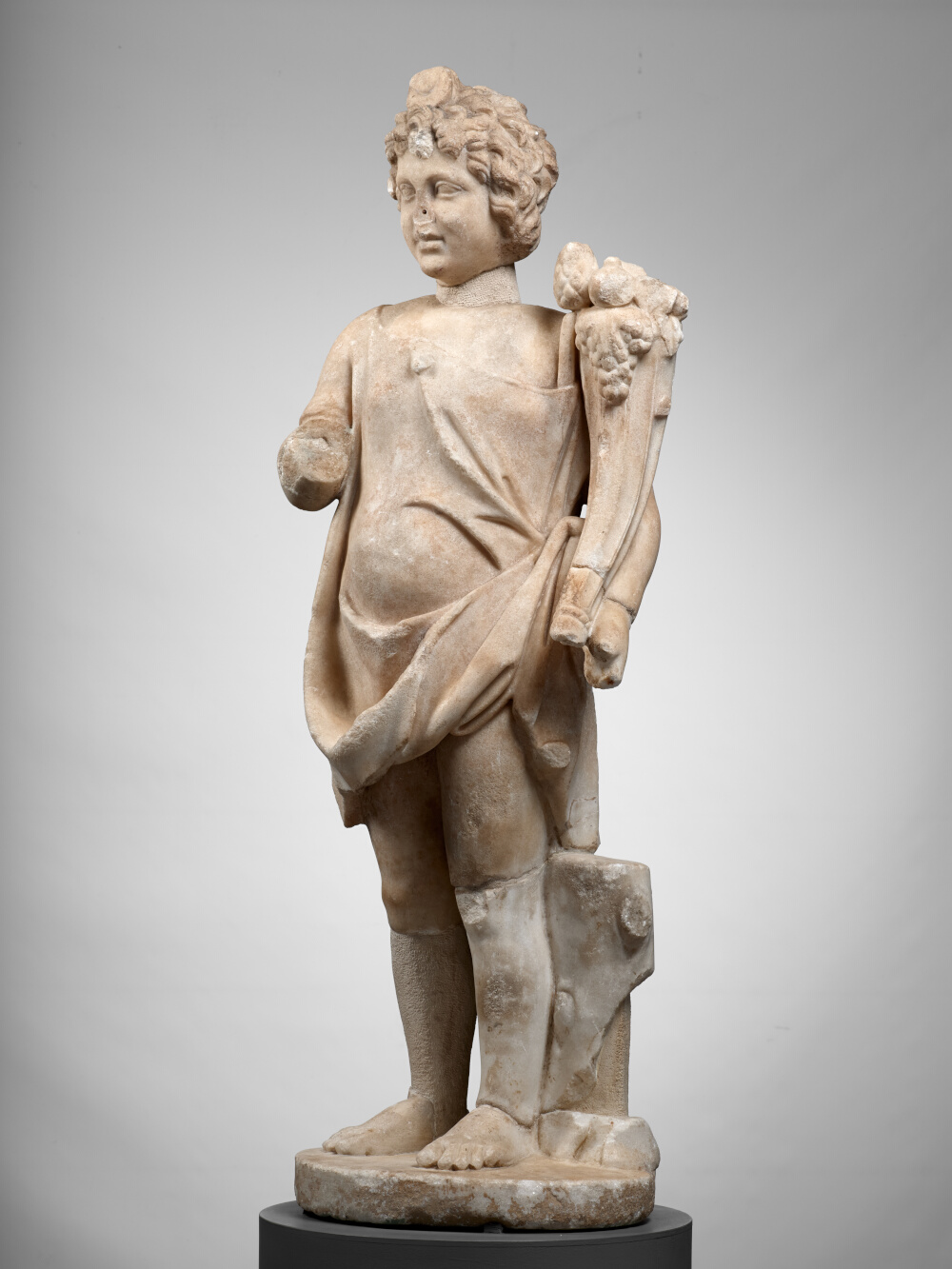
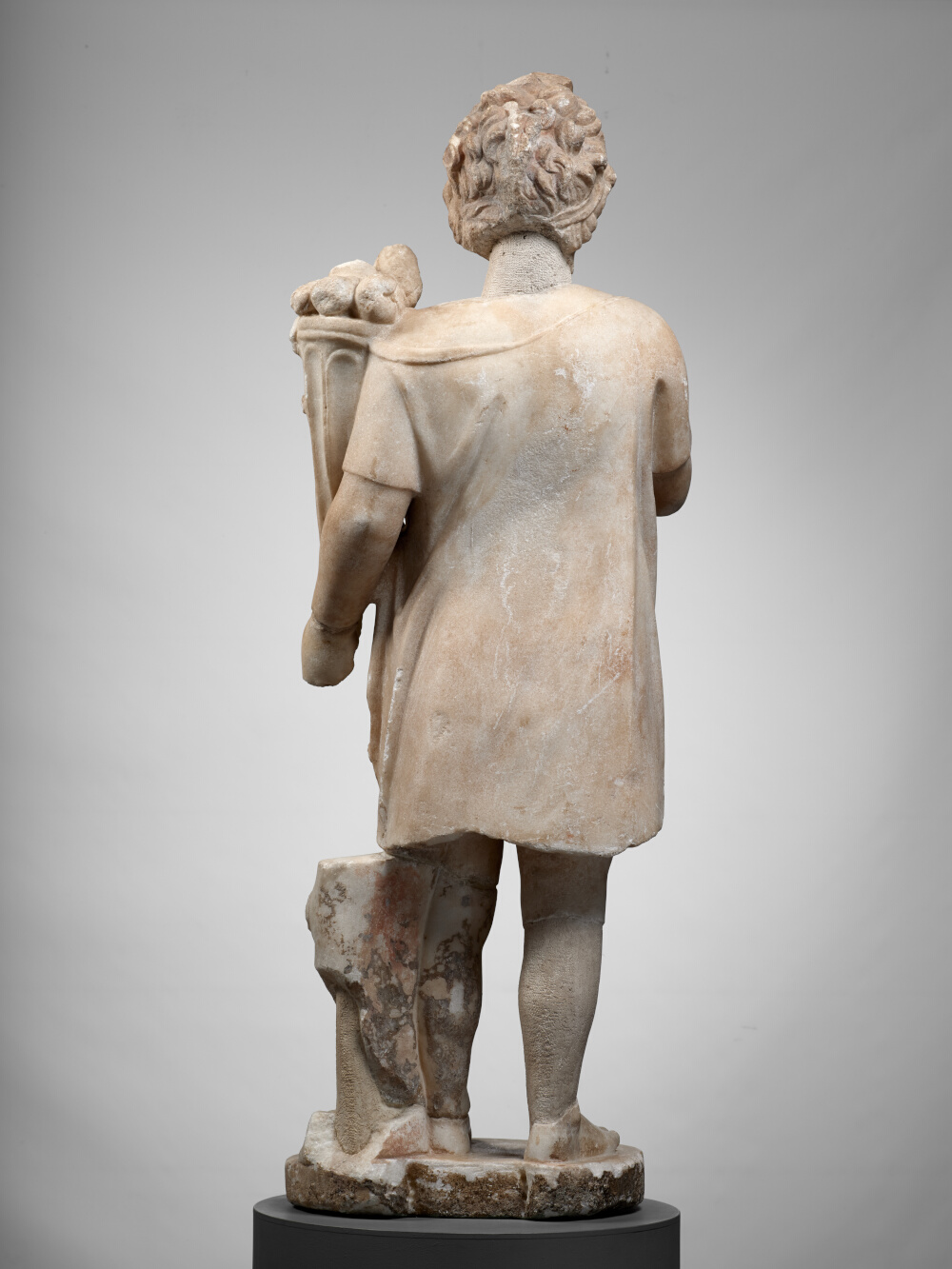
- Date de création
- 3rd-first third of the 4th century(?)
- Material
- Marble
- Dimensions
- H. 111,5 x l. 43,8 x P. 28 (cm)
- Inventory number
- Ra 40
- Photo credits
- Daniel Martin
This statue is the largest representation of Harpocrates ever discovered in France. The god carries a horn of plenty, symbol of fertility and fecundity. Although the neck and legs have been reconstructed, but the right arm has not because the exact position of the hand is not known. Yet is it highly likely that the index finger was raised to the lips, which for the Romans symbolized an appeal for silence, thus signifying that any intelligence was restricted to those who worshipped Isis P. Matthey, « ‘Chut !’ Le signe d’Harpocrate et l’invitation au silence, » F. Prescendi, Y. Volokhine (eds.), Dans le laboratoire de l’historien des religions : mélanges offerts à Philippe Borgeaud (Religions en perspective), Geneva-Paris, 2011, pp. 541–573, pp. 545-546.. Although this invitation to secrecy is mentioned by written sources in the 1st century AD, the gesture was originally shown by a hieroglyph meaning « child » (meaning he or she who does not speak).
The Macedonian Ptolemaic dynasty that had ruled Egypt since the end of the 4th century BC introduced a divine triad consisting of Isis, Serapis and Harpocrates in Alexandria, its capital. In a now Hellenised form, the latter referred to Horus, the ancestral Egyptian falcon-god, posthumous son of Osiris begotten by Isis. In Pharaonic Egypt, Horus took the name Heru-pa-khered (Horus the Younger), when he was represented and venerated in the form of a child, the name from which the deity’s Greek name was taken. It is therefore this youthful aspect that was preserved during the Hellenistic period, and again during the Roman period. In this context, the horn of plenty is suggestive of childbirth. The god was closely linked to the rising sun, thus, in the Eastern Greek world, as in the Rome of the last days of the Republic, Harpocrates’ relationship to the sun was reinforced by his assimilation with Apollo.
Although fairly rarely mentioned in inscriptions, the son of Isis was, on the contrary, abundantly represented on lamps or in hard stone, bronze or terracotta artefacts from the 2nd century onwards. Harpocrates went on to became a deity who protected homes, and was particularly popular among the lower classes. The posture, gestures and attributes of the sculpture discovered in Chiragan are also found on some 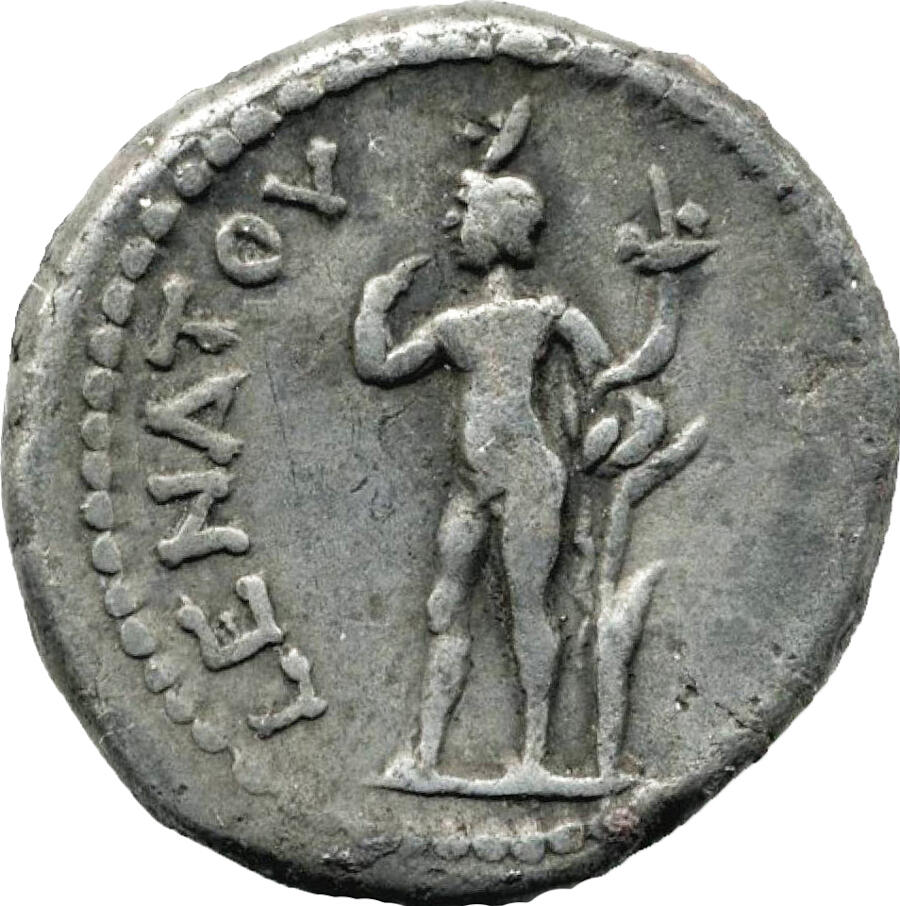 provincial coins minted in Alexandria under Trajan. The same characteristics can be seen on issues from Asia Minor during the 3rd century, coins minted in the province of Lycia et Pamphilia, for Gaius Iulius Verus Maximus, son of the emperor Maximinus Thrax (235-238), or in that of Bithynia, in the effigy of Trajan Decius and even
provincial coins minted in Alexandria under Trajan. The same characteristics can be seen on issues from Asia Minor during the 3rd century, coins minted in the province of Lycia et Pamphilia, for Gaius Iulius Verus Maximus, son of the emperor Maximinus Thrax (235-238), or in that of Bithynia, in the effigy of Trajan Decius and even 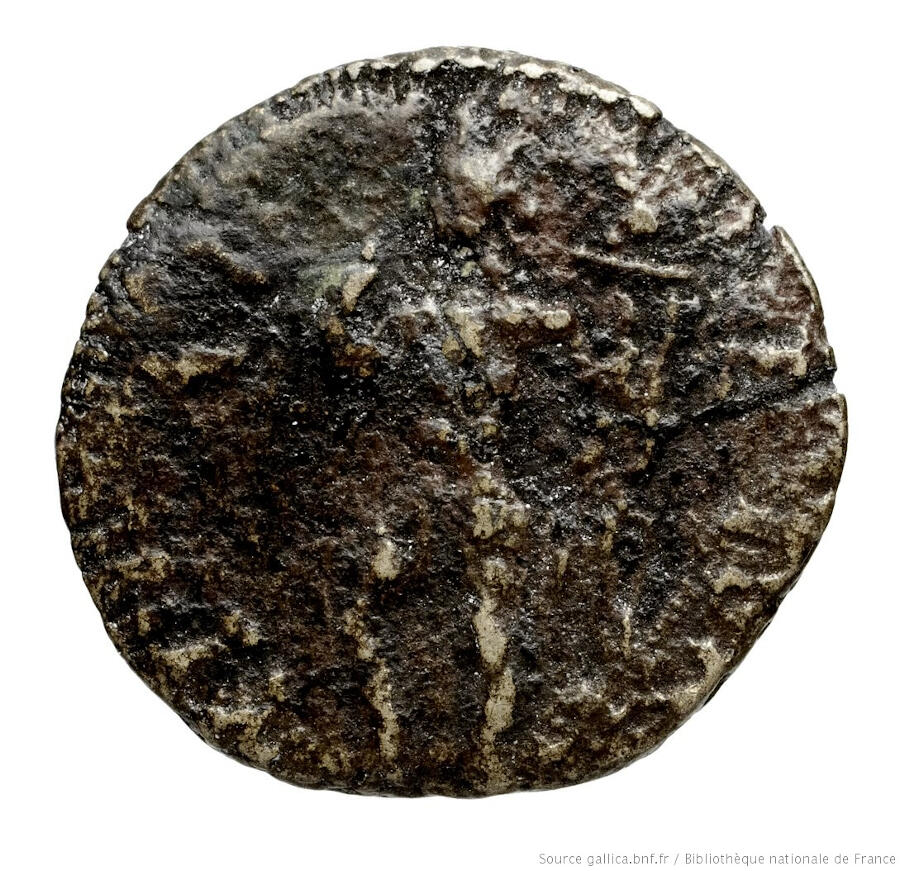 his wife Herenia Estruscilla, in the middle of the century. On them, the empress is associated with a figure of Harpocrates, which undoubtedly referred to the couple’s children and, consequently, to the future of the imperial house M. Amandry, A. Burnett, Roman Provincial Coinage , Vol. III : Nerva, Trajan and Hadrian (AD 96-138), London-Paris, 2015, 4183. A. Hostein, J. Mairat, Roman Provincial Coinage, Vol. IX : From Trajan Decius to Uranius Antonius (AD, London-Paris, 2016, no 282.. Although a portrait of Herenia Estruscilla was discovered in Chiragan (it is one of the most imposing female images known to have been produced during the entire Roman period), there are no clues to link it to the Isiac sculptures unearthed on the site of the villa.
his wife Herenia Estruscilla, in the middle of the century. On them, the empress is associated with a figure of Harpocrates, which undoubtedly referred to the couple’s children and, consequently, to the future of the imperial house M. Amandry, A. Burnett, Roman Provincial Coinage , Vol. III : Nerva, Trajan and Hadrian (AD 96-138), London-Paris, 2015, 4183. A. Hostein, J. Mairat, Roman Provincial Coinage, Vol. IX : From Trajan Decius to Uranius Antonius (AD, London-Paris, 2016, no 282.. Although a portrait of Herenia Estruscilla was discovered in Chiragan (it is one of the most imposing female images known to have been produced during the entire Roman period), there are no clues to link it to the Isiac sculptures unearthed on the site of the villa.
P. Capus
Bibliography
- Cazes et al. 1999 D. Cazes, E. Ugaglia, V. Geneviève, L. Mouysset, J.-C. Arramond, Q. Cazes, Le Musée Saint-Raymond : musée des Antiques de Toulouse, Toulouse-Paris. p. 102
- Clarac 1841 F. Clarac, Musée de sculpture antique et moderne ou Description historique et graphique du Louvre et de toutes ses parties : des statues, bustes, bas-reliefs et inscriptions du Musée royal des Antiques et des Tuileries, et de plus de 2500 statues antiques … tirées des principaux musées et des diverses collections de l’Europe… accompagnée d’une iconographie égyptienne, grecque et romaine…. Tome II, Paris. p. 585
- Du Mège 1835 A. Du Mège, Description du musée des Antiques de Toulouse, Toulouse. no 126
- Du Mège 1828 A. Du Mège, Notice des monumens antiques et des objets de sculpture moderne conservés dans le musée de Toulouse, Toulouse. no 56
- Espérandieu 1908 É. Espérandieu, Recueil général des bas-reliefs de la Gaule romaine, 2. Aquitaine, Paris. p. 49, no 923
- Hostein, Mairat 2016 A. Hostein, J. Mairat, Roman Provincial Coinage, Vol. IX : From Trajan Decius to Uranius Antonius (AD, London-Paris. vol. IX, no 282
- Joulin 1901 L. Joulin, Les établissements gallo-romains de la plaine de Martres-Tolosane, Paris. no 179 B
- Lafore s. d. J.-G. Lafore, Le culte d’Isis en Gaule : Statues d’Isis au Musée des Augustins et au Musée Saint-Raymond à Toulouse, Toulouse. p. 10
- Lebègue 1889 A. Lebègue, « Une école inédite de sculpture gallo-romaine, » Revue des Pyrénées et de la France méridionale, p. 28. p. 10-11
- Massendari 2006 J. Massendari, La Haute-Garonne : hormis le Comminges et Toulouse 31/1 (Carte archéologique de la Gaule), Paris. p. 254, fig. 140
- Rachou 1912 H. Rachou, Catalogue des collections de sculpture et d’épigraphie du musée de Toulouse, Toulouse. no 40
- Reinach 1897 S. Reinach, Répertoire de la statuaire grecque et romaine, Paris. t. II, vol. II, p. 430, fig. 8
- Roschach 1865 E. Roschach, Catalogue des antiquités et des objets d’art, Toulouse. no 40
To cite this notice
Capus P., "Harpocrates", in The sculptures of the roman villa of Chiragan, Toulouse, 2019, online <https://villachiragan.saintraymond.toulouse.fr/en/ark:/87276/a_ra_40>.